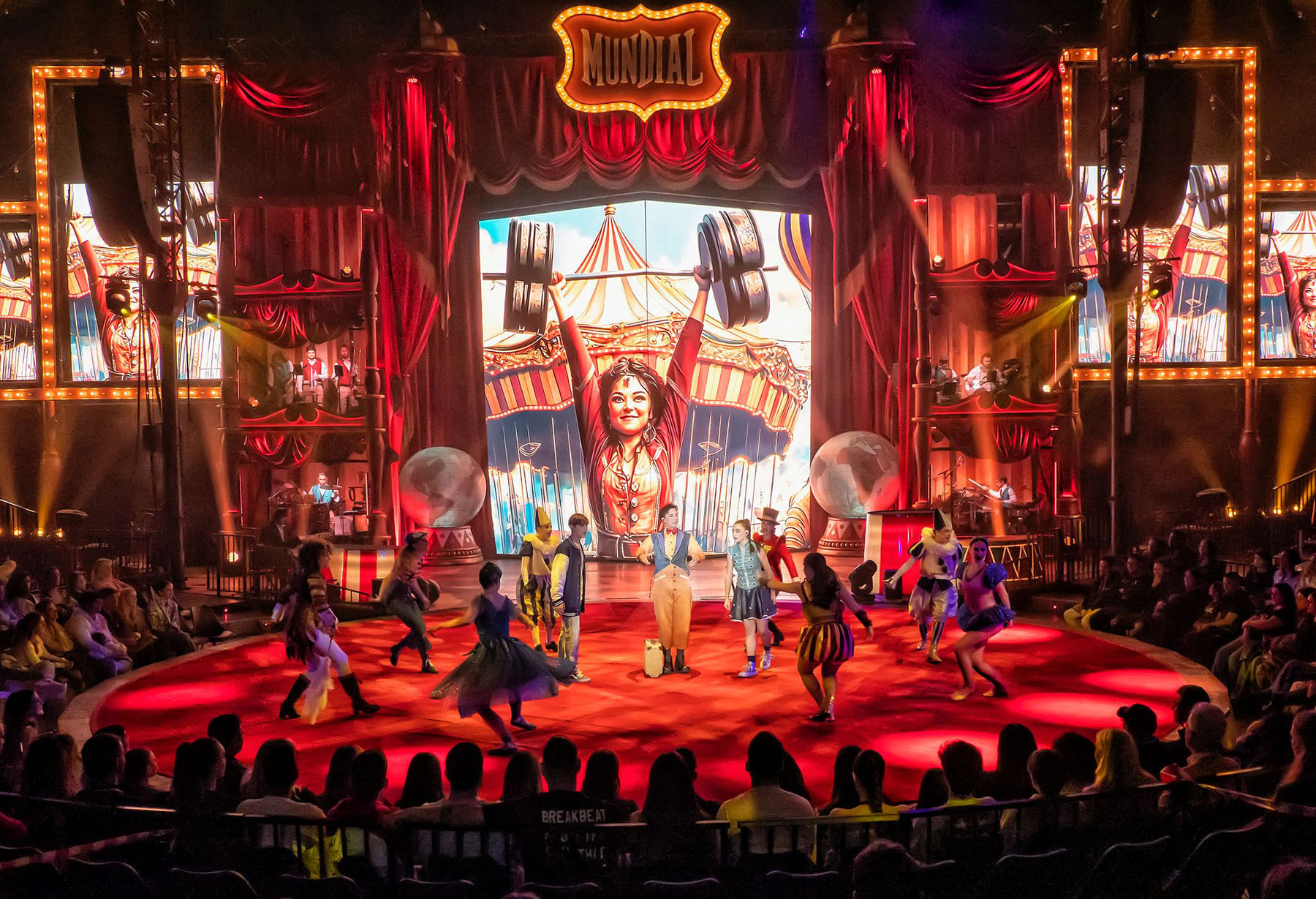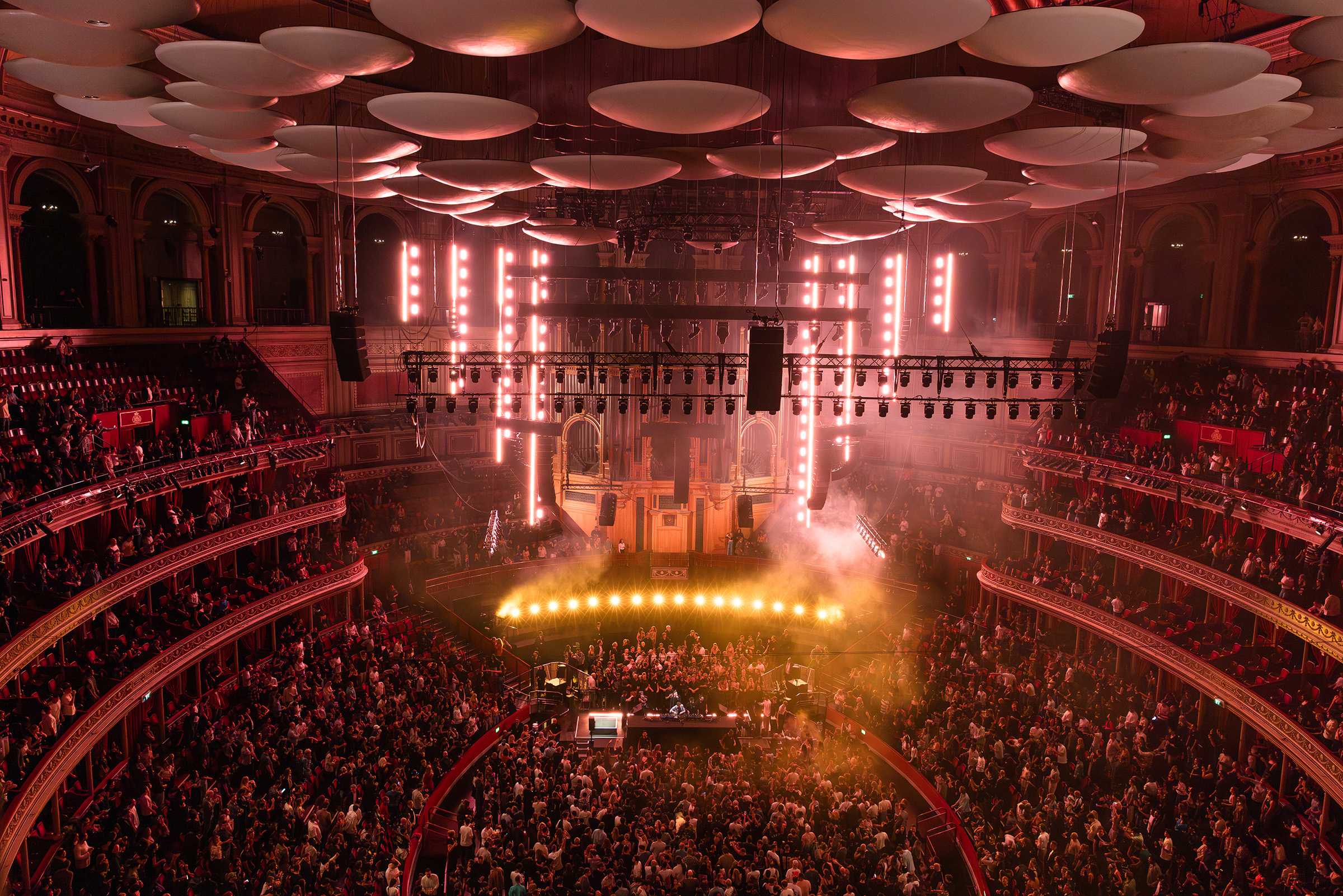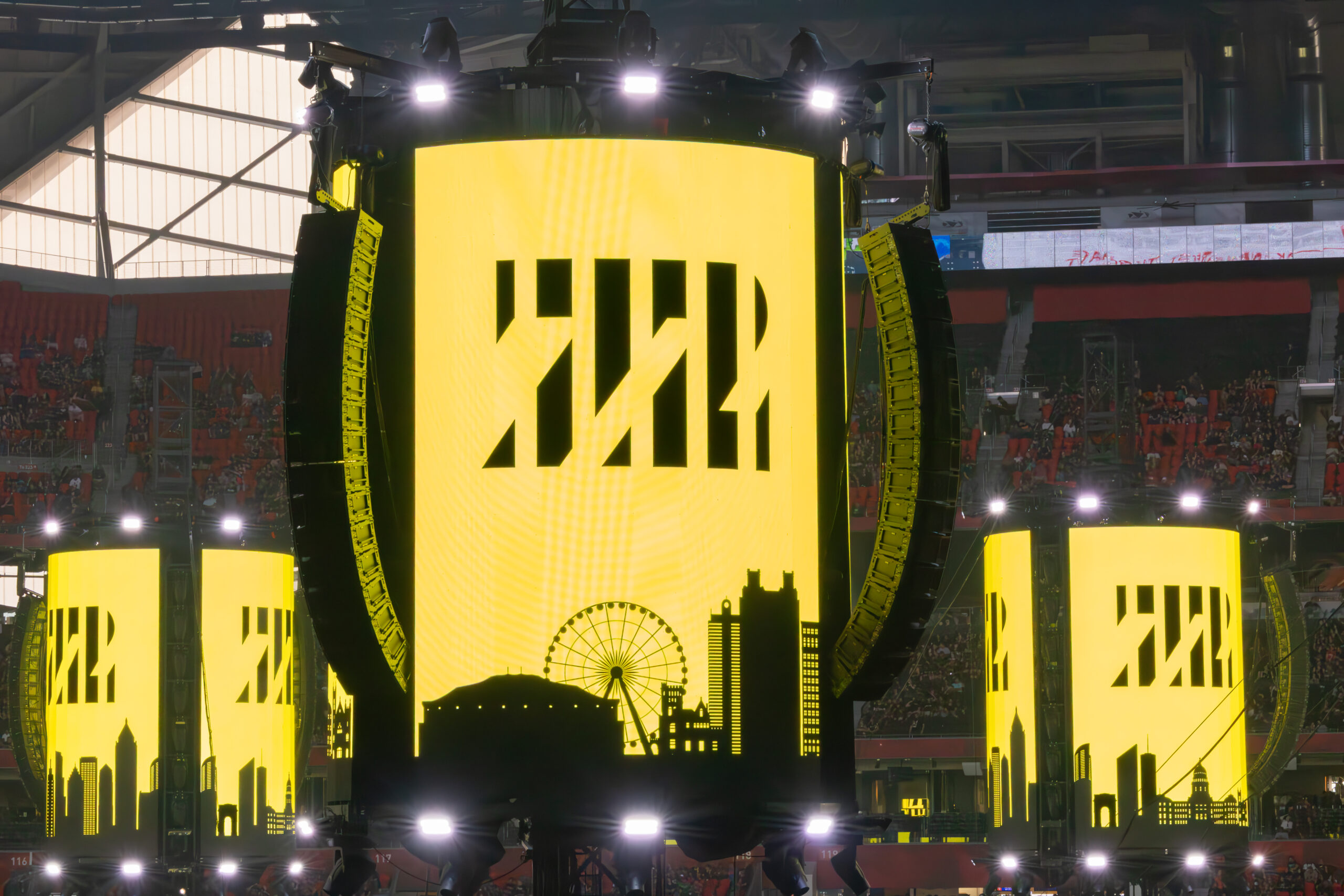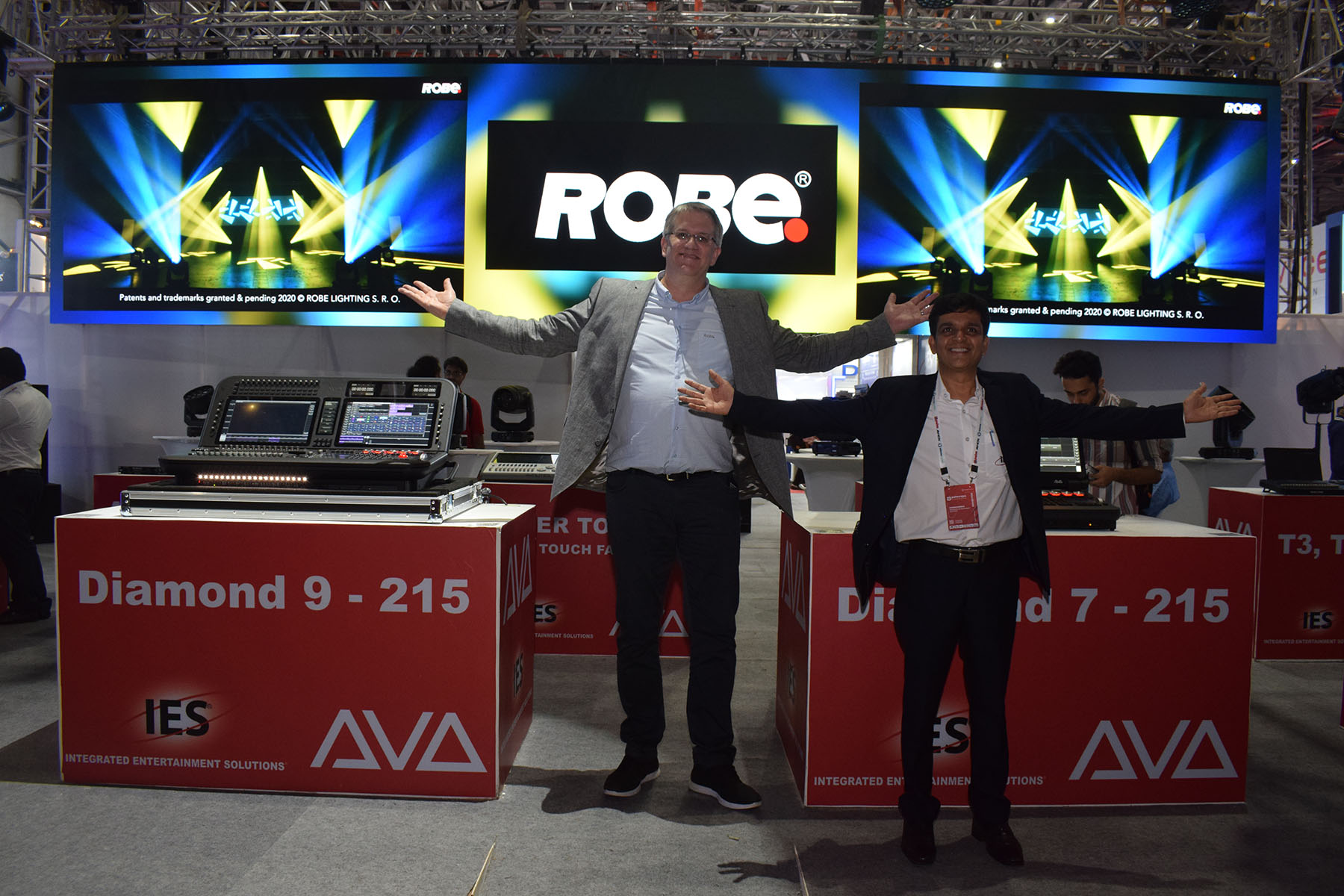BLACKBURN, U.K. – HSL provided lighting, Kinesys automation, projection and LED video to support LD Andy Liddle's design for U.K. and European legs of the recent tour for Orchestral Manoeuvres In the Dark (OMD). Liddle sought to complement OMD's three decades of synth pop and also drew inspiration from the band's angular cover art for its most recent album, History of Modern, with a mix of moving elements, LED and projection surfaces and lighting.
All suppliers were invited to bid for the tour at the outset, Liddle noted. One of the reasons HSL was chosen was because of their experience "with moving elements, LED surfaces and projection in addition to lighting."
Liddle's design emanated from an upstage stretch projection screen, and included eight areas of Pixled F40 LED screen, six of which were rigged to sections of 12-inch truss that technician/rigger Eugene Benavidez moved on the 12-axis Kinesys system using half-ton Liftket motors.

The crew attached a selection of 4-way linear Moles and Martin Atomic strobes to the trussing sections behind the screen panels in a way that let them make the screen transparent at times.
Sections seven and eight of the F40 screen were on the floor, forming a long fascia to the front of the main band riser, which was downstage of the projection screen.
At the top of the show, the intro video, produced by Pip Rhodes, was projected onto a full-length gauze drape attached to the front truss by a Robe DigitalSpot mounted on the back truss. After that, the gauze was kabuki-dropped in to the floor.
Two more DigitalSpot 7000DTs rigged stage left and right on the side fills were used to feed images to the main projection screen.
The content, ranging from the political to the abstract, ran across all surfaces – projection and LED, most of it commissioned by the band and produced by Hambi Haralambous. The LED surfaces were all fed by one of HSL's Hippotizer media servers run by Matt Brown via a Hog 3 console.
A second (double action) electric kabuki drop jettisoned the rear screen after the anti-nuclear anthem, "Enola Gay." The top and bottom solenoids were released first, followed by the sides, snapping the stretched cloth to the floor.
The moving LED elements added flexibility to the visuals and the performance space itself, with two numbers in particular serving as a case in point – "Locomotion" and the finale, "Electricity."
Both gave Benavidez the chance to demonstrate his Kinesys Vector control operating skills and the smoothness and dynamics of the system.
"My instructions to him were to 'go wild' in Electricity," said Liddle, "and that's exactly what he did, running a big chase at full speed, which was gobsmackingly awesome to behold!"

For lighting, Liddle used 24 GLP Impression LED wash lights arranged in six batches of four across the three main trusses for a touch of retro ACL "architecture."
The rig also included 16 Robe ColorSpot 700E ATs distributed between the trusses for keylighting the band Six of them were positioned upstage of the band riser to create beam looks onto the forestage and into the audience.
Another retro touch: the two bars of 6 PARs per side, which stood vertically offstage on both sides for strong cross-lighting. The rig also included strobes and blinders behind the Pixled panels, a single follow spot and a 400W HTI green metal halide unit center stage that created a sinuous gassy green effect for the performance of "green."
Liddle ran the lighting with an Avolites Tiger Touch console. The DigitalSpots were chosen in part for their MIDI timecode capabilities and small footprint. Some of the show video was timecode-triggered from onstage by tech guru Roger Lyons' ProTools rack. Other clips were cued manually via the Hog 3.
Mike Oates project-managed the tour for HSL, with John Trincas working with technicians/riggers Benavidez and Brown.
"I was very impressed with the way HSL had prepped the kit beforehand," said Liddle, of the four days of production rehearsals before the tour at Litestructures in Wakefield. "It all went together beautifully, which was a real help as we were extremely stretched for programming time."
HSL sourced the video equipment from XL Video UK. Capital Sound Hire from London supplied the sound gear.
For more information, please visit www.hslgroup.com.



